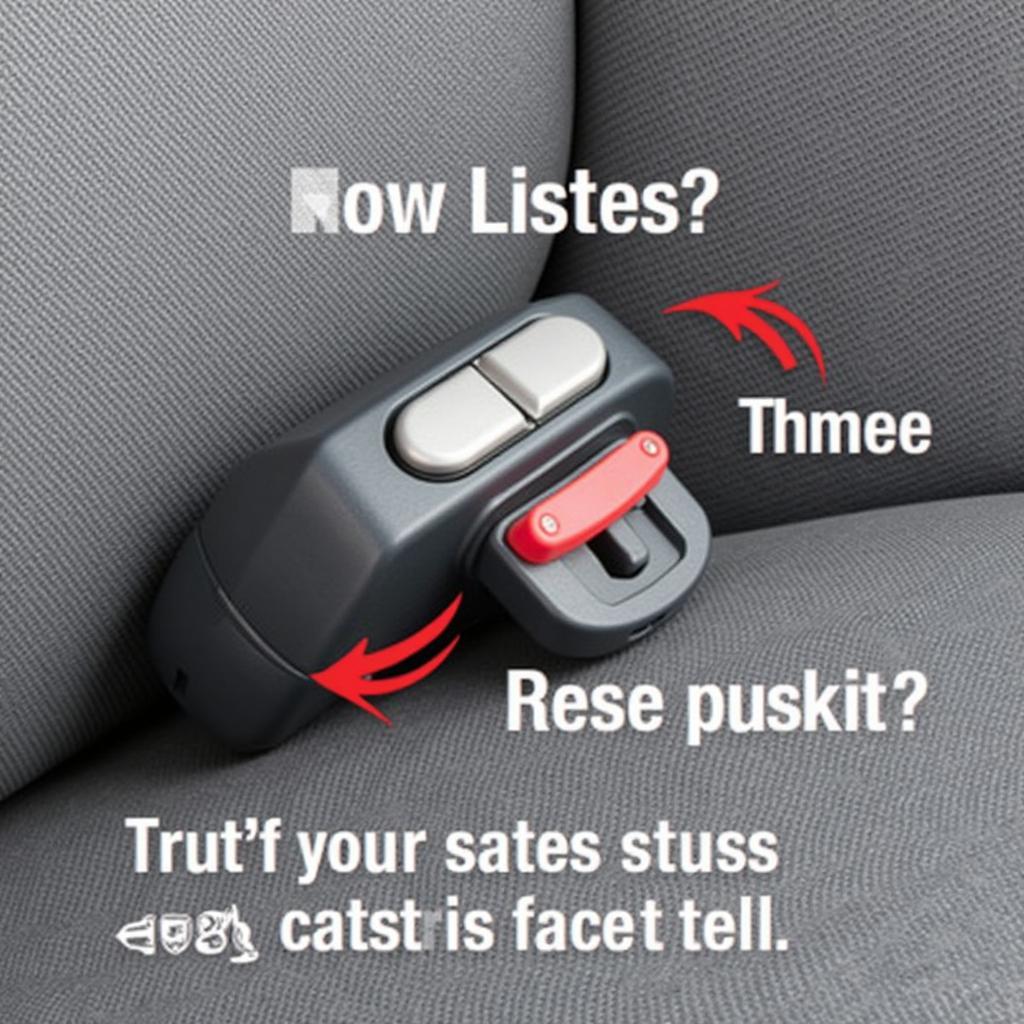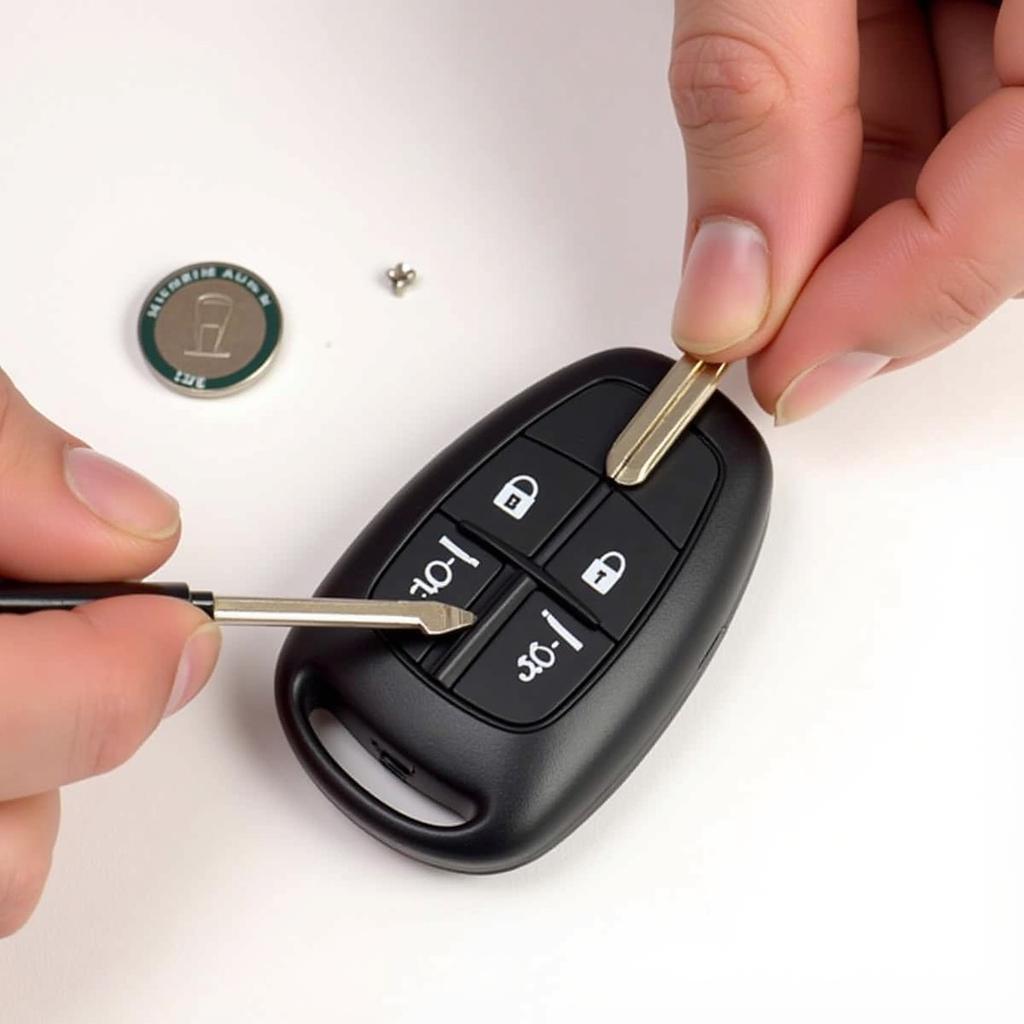If you own a 2012 Buick Enclave, you might have encountered the dreaded “Stabilitrak” warning light illuminating your dashboard, often accompanied by unexpected brake behavior. This issue has plagued many Enclave owners, leading to frustration and safety concerns. This comprehensive guide delves into the common causes behind the 2012 Buick Enclave Stabilitrak warning and brake problems, providing potential solutions and preventive measures.
Understanding the Stabilitrak System
Before we delve into the issues, it’s crucial to understand what the Stabilitrak system does. Stabilitrak is General Motors’ electronic stability control system designed to help drivers maintain control of their vehicles during emergency maneuvers. It does this by selectively applying brakes to individual wheels and managing engine power to prevent skidding or loss of control. When functioning correctly, Stabilitrak acts as an invisible safety net, especially in adverse driving conditions.
Common Causes of Stabilitrak and Brake Issues in 2012 Buick Enclaves
Several factors can trigger the Stabilitrak warning light and lead to brake issues in your 2012 Buick Enclave. Here are some of the most prevalent culprits:
1. Faulty Wheel Speed Sensors
The most common cause is a malfunctioning wheel speed sensor. These sensors are critical components of the Stabilitrak system. They constantly monitor the rotational speed of each wheel and relay this information to the Electronic Brake Control Module (EBCM). If a sensor sends incorrect data or fails altogether, it can confuse the Stabilitrak system, leading to the warning light and potential braking issues.
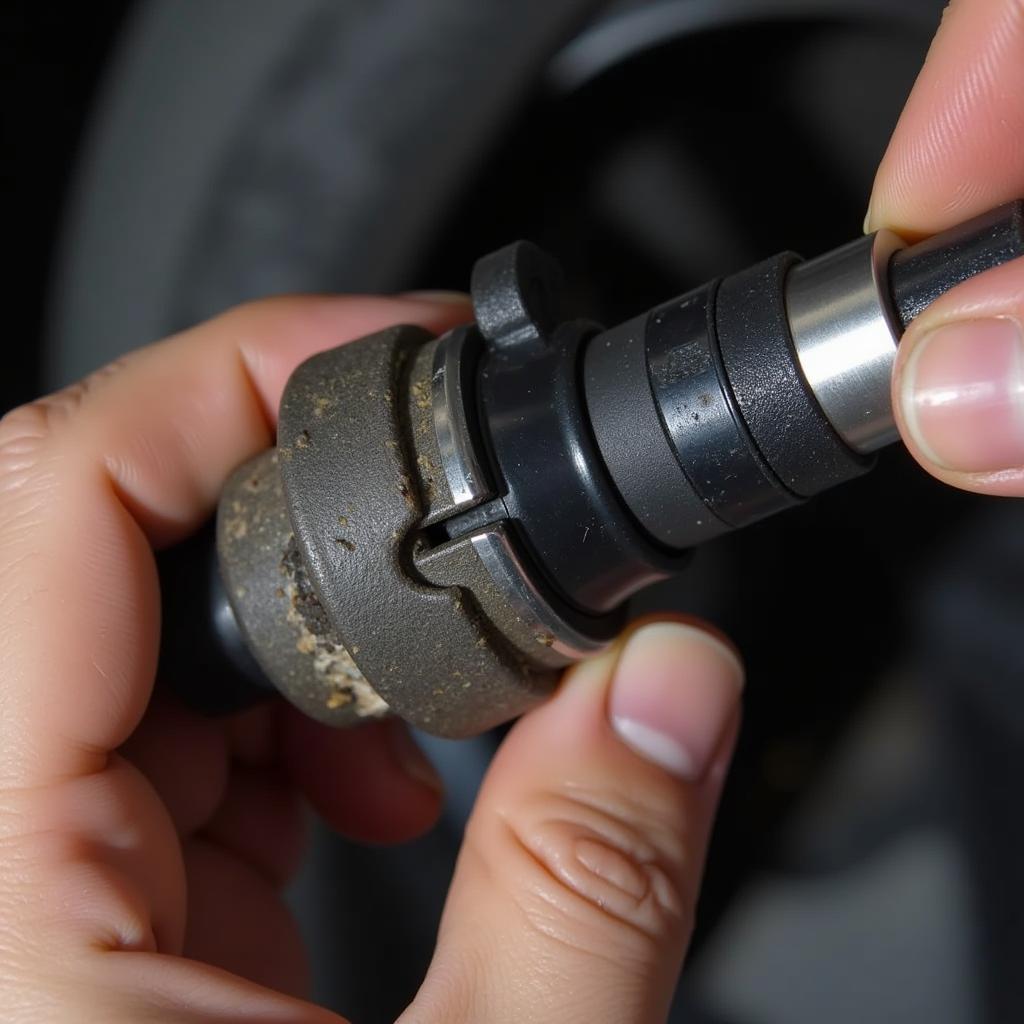 2012 Buick Enclave Faulty Wheel Speed Sensor
2012 Buick Enclave Faulty Wheel Speed Sensor
2. Steering Angle Sensor Malfunction
Another common culprit is a faulty steering angle sensor. This sensor informs the EBCM about the driver’s intended direction. A malfunctioning sensor can send inaccurate data, causing the Stabilitrak system to misinterpret the vehicle’s dynamics and activate unnecessarily, leading to the warning light and potential braking anomalies.
3. Worn Brake Pads and Rotors
While not directly related to the Stabilitrak system, worn brake pads and rotors can contribute to braking issues that might be mistaken as Stabilitrak problems. As the braking components wear down, their effectiveness diminishes, potentially causing pulsations, vibrations, or a longer stopping distance.
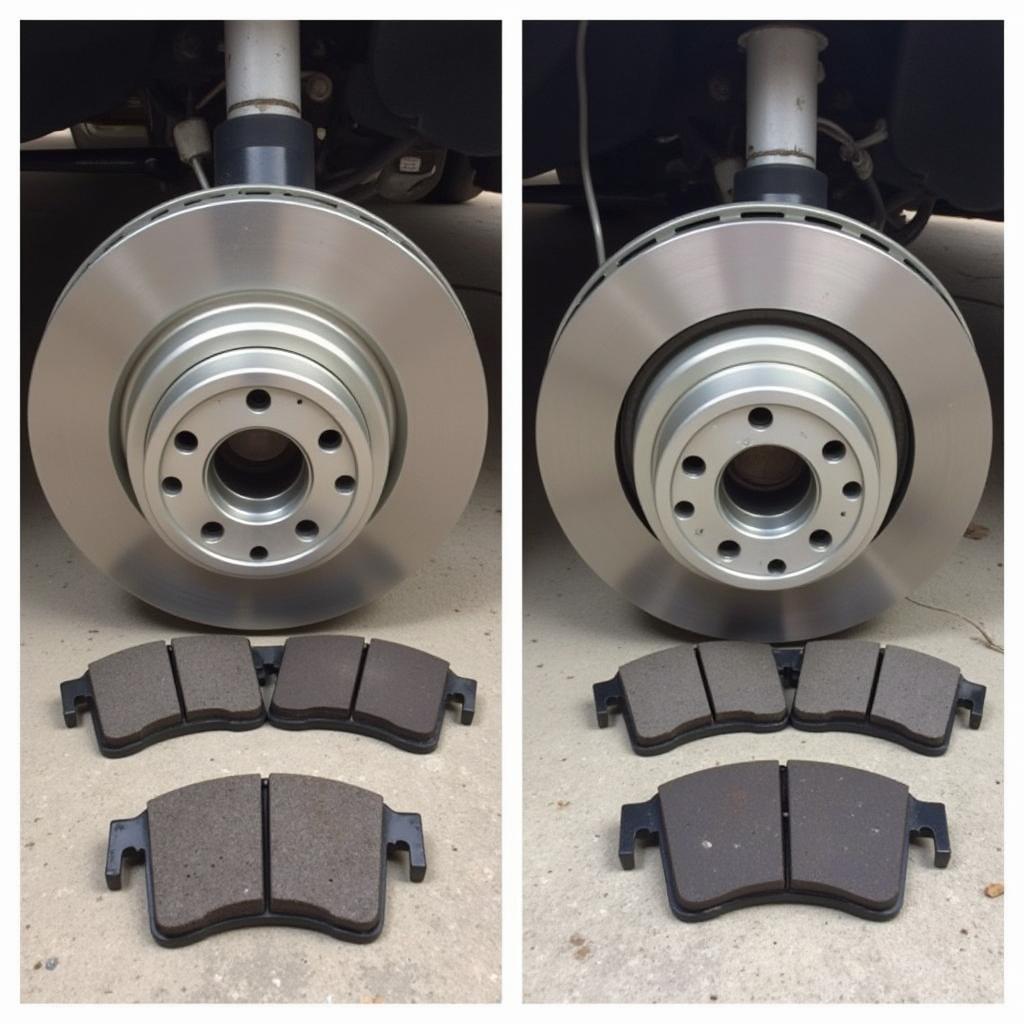 2012 Buick Enclave Worn Brake Pads and Rotors
2012 Buick Enclave Worn Brake Pads and Rotors
4. Low Battery Voltage
While it may seem unrelated, a weak or dying battery can trigger a cascade of electrical problems in your Enclave, including those affecting the Stabilitrak system. The system relies on a stable voltage supply to function correctly. If the battery can’t provide consistent power, it can disrupt the communication between various sensors and the EBCM, potentially leading to the warning light and other electronic glitches.
5. Software Glitches
Like any other complex electronic system, the Stabilitrak system relies on software to function correctly. Occasionally, software glitches or bugs can disrupt its operation. These glitches might arise from various factors, such as corrupted data, incomplete software updates, or even electromagnetic interference.
Diagnosing the Problem
Diagnosing the exact cause of the Stabilitrak and brake issues in your 2012 Buick Enclave often requires specialized diagnostic equipment. While some symptoms might point towards specific components, a proper diagnosis involves:
-
Retrieving Diagnostic Trouble Codes (DTCs): A professional mechanic can connect a scan tool to your Enclave’s onboard diagnostic port (OBD-II) to retrieve any stored DTCs. These codes provide valuable insights into the specific areas where the system detects faults.
-
Inspecting Wheel Speed Sensors: Each wheel speed sensor can be visually inspected for damage, corrosion, or debris buildup.
-
Testing the Steering Angle Sensor: The steering angle sensor’s functionality can be tested using specialized equipment to ensure it’s sending accurate data to the EBCM.
-
Checking Battery Voltage: A simple voltage test can determine if the battery is providing adequate power to the vehicle’s electrical system.
Solutions and Preventive Measures
Once the root cause of the Stabilitrak and brake issues is identified, several solutions can be implemented:
1. Replacing Faulty Components
If the diagnosis reveals faulty wheel speed sensors, a steering angle sensor malfunction, or other failing components, replacement is often the most effective solution. It’s crucial to use OEM (Original Equipment Manufacturer) or high-quality aftermarket parts to ensure compatibility and reliability.
2. Brake System Maintenance
Regular brake system maintenance is crucial for optimal braking performance and to prevent issues from cascading into more significant problems. This includes routine brake pad and rotor replacement, brake fluid flushes, and caliper inspections.
3. Battery Maintenance
Maintaining a healthy battery is vital for the overall electrical system, including the Stabilitrak system. Having your battery tested regularly and replaced when necessary can prevent many electrical gremlins and ensure the Stabilitrak system functions without interruption.
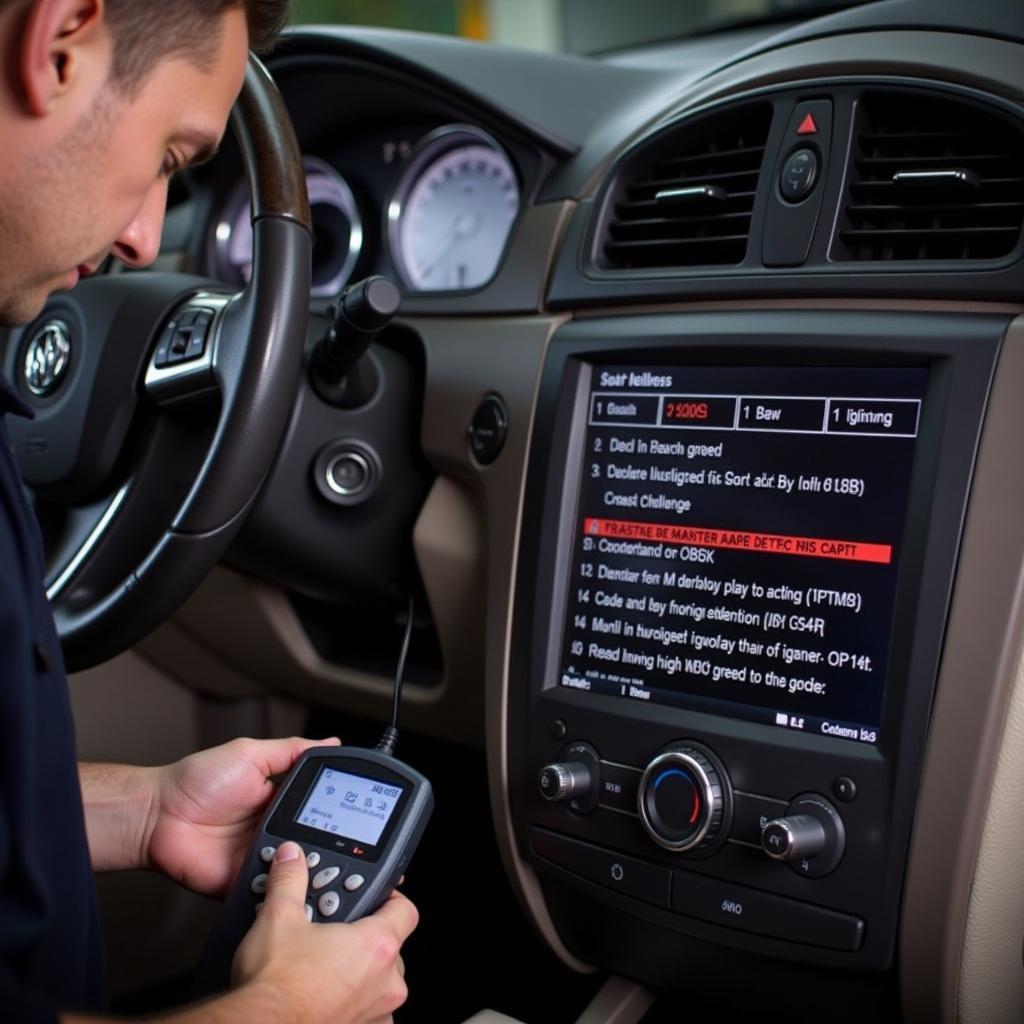 2012 Buick Enclave Diagnostic Scan
2012 Buick Enclave Diagnostic Scan
4. Software Updates
GM periodically releases software updates for various vehicle systems, including the Stabilitrak system. Visiting a certified Buick dealership or a trusted mechanic specializing in GM vehicles can ensure your Enclave has the latest software updates, potentially resolving glitches and improving system performance.
Conclusion
A malfunctioning Stabilitrak system in your 2012 Buick Enclave should never be ignored. Addressing the issue promptly ensures your safety and prevents potential hazards on the road. By understanding the common causes, seeking professional diagnosis, and implementing the appropriate solutions, you can restore your Enclave’s stability and regain confidence in your vehicle’s safety features.

